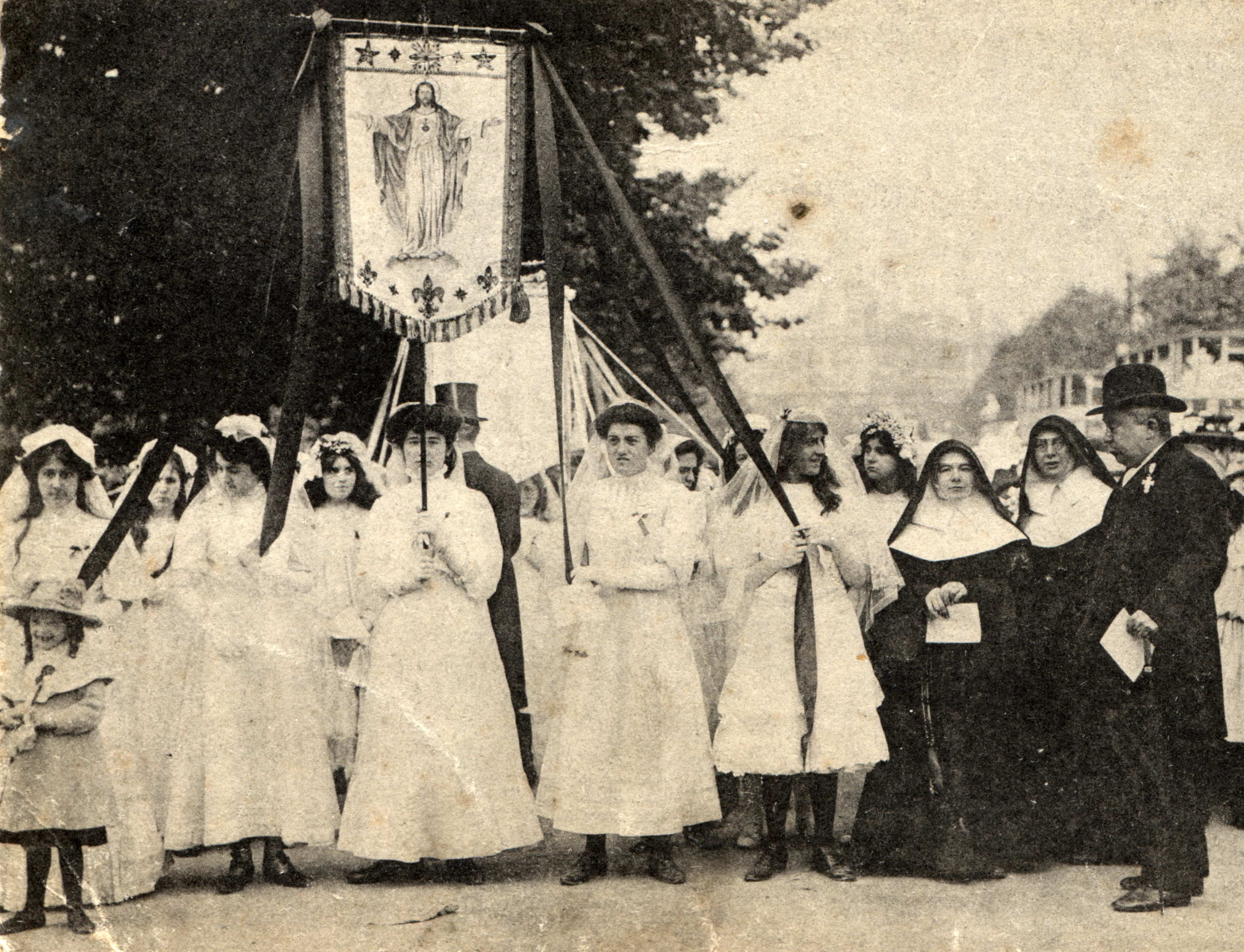|
|
|
The Wenchoster Maidenís Day is a significant event in the city calendar; a day of pageantry, with a procession of Maidens through the streets, and various historical and modern tableau being staged on the Cathedral Green in The Close. There are also many traditional and national dances performed en-route and outside the Cathedralís great West Door. Inside the Cathedral maidens light tall white candles in the Lady Chapel and hang parchment garlands around the neck of the statue of the Saint Veronica. Mothers, whores and widows are barred from the procession along with men. Maidenís Day is a good barometer of social attitudes. In 1938 there were 231 maidens participating in the Festival; by 1968 the total had shrunk to 99; but in 2019 it had risen again to 143. The history of the Maidenís Day in Wenchoster reaches right back to medieval times, but owes its present form to Emily and Maggie Clamberbitch, the daughters of the landlord of the ďNine BellsĒ in Privvy Street. In 1827 these two ladies revived the ancient practices, organising a procession and a special service in the Cathedral, and financed the day themselves. It received moderate support from the people and clergy, and ended with a total profit of the two old pence - this grand sum being shared between them.
In March 1908 the Wenchoster Bugle reported: During the Second World War, a modified form of the Wenchoster Maidenís Day was held, often with an end object such as the National Savings Campaign. It is interesting to note that in 1940 the committee sent parcels of "Knitted Home Comforts" to serving members of the Forces from the city. An example of a typical Maidenís Day was Sunday, 27th June 1976, with the Procession forming up in the Public Car Park at North Wench. With banners held aloft the procession moved through the streets to the Market Cross where it paused for whilst the Wenchoster Morris danced ďRising shepherds show your hornĒ. Reforming the procession made its way along the High Street and down through the North Gate of the cathedral Close. At the West Door candles were distributed, the maidens each collecting a parchment scroll from the Sidesmen as they entered the building. After the offerings had been made in the Lady Chapel all reassembled on The Green where the Dean gave an interdenominational blessing. The day continued with refreshments being served in a grand marquee set up in the garden of the Bishopís Palace, and by the lily pond children performed traditional dances. In 1913, Ben Dover, from Jorrocks Street, Wenchoster Parva, caused local outrage by dressing himself as a maiden and taking part in the procession. His disguise passed casual observation, but he aroused suspicions at the Market Cross when he was observed disappearing into the public toilets via the Gentlemenís door. He was intercepted as the procession entered The Close and escorted to the Close Constableís office. He was released a few hours later after being interviewed by the Canon Precentor and the Bishopís chaplain. His costume was confiscated by the Dean.
1913, and Ben Dover is apprehended by the Close Constable, Colonel Matchem
|
|
|
